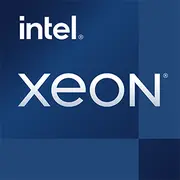Intel Xeon E-2276M

Intel Xeon E-2276M: Processor for Mobile Workstations
Overview of capabilities, performance, and use cases
1. Architecture and Process Technology: Coffee Lake in Corporate Execution
The Intel Xeon E-2276M processor, released in 2019 but still relevant in 2025 for niche tasks, is built on the Coffee Lake microarchitecture (14 nm). It is a 6-core CPU with 12 threads thanks to Hyper-Threading. The base frequency is 2.8 GHz, with a maximum Turbo Boost frequency of 4.7 GHz (for one core) and 4.3 GHz when all cores are under load.
Architecture Features:
- Supports DDR4-2666 memory (up to 128 GB) with ECC (Error Correction Code) — a key feature of Xeon for professional tasks.
- Integrated graphics Intel UHD Graphics P630 with a base frequency of 350 MHz and a maximum of 1.2 GHz. It supports 4K displays, hardware decoding of HEVC, and enhances rendering in CAD applications.
- 12 MB of L3 cache — sufficient volume to minimize latency during data processing.
Why 14 nm?
Despite Intel's transition to 10 nm and 7 nm in other lines, the Xeon E-series retained 14 nm due to a focus on stability and compatibility with workstation platforms. This is a compromise between reliability and energy efficiency.
2. TDP 45 W: A Balance Between Power and Autonomy
A TDP (Thermal Design Power) of 45 W indicates that the processor is designed for laptops with efficient cooling systems. Compared to consumer CPUs (for example, the Core i7-11800H with 45 W), the Xeon E-2276M is optimized for prolonged loads:
- Supports Intel Speed Shift technology (fast frequency switching) and Thermal Velocity Boost (automatic overclocking at low temperatures).
- In idle mode, power consumption drops to 2–5 W, extending battery life.
However, for compact ultrabooks, such a TDP is excessive — the processor is more commonly found in 17-inch workstations or powerful 15-inch laptops with large heat sinks.
3. Performance: Real Tasks and Turbo Mode
Office Work and Multitasking:
- With over 50 tabs open in a browser, Excel with macros, and simultaneous video rendering in Premiere Pro, the processor demonstrates smooth operation due to its 12 threads.
- Geekbench 6 Single-Core: 1453 — a level sufficient for instant interface responsiveness.
Multimedia:
- Rendering 4K video in DaVinci Resolve takes 15% less time compared to the Core i7-9750H (6 cores/12 threads), thanks to optimizations for professional codecs.
- In Adobe Photoshop, processing RAW files with filters occurs without lag.
Gaming:
- The integrated P630 graphics are a weak point. In Cyberpunk 2077 (1080p, low settings) — 18–22 FPS. But with a discrete graphics card (for example, NVIDIA RTX 3060), the processor shines: in Call of Duty: Warzone (1440p) — stable 90 FPS.
Turbo Mode:
Under full core load, the frequency maintains at 4.1–4.3 GHz for 2–3 minutes, then decreases to 3.8 GHz due to heat. In laptops with liquid cooling, performance degradation is nearly absent.
4. Use Cases: Who is the Xeon E-2276M Designed For?
- Engineers and Designers: ECC memory support is critical for CAD applications (AutoCAD, SolidWorks), where calculation errors are unacceptable.
- Data Analysts: 6 cores accelerate the processing of large datasets in Python and R.
- Video Editors: Hardware acceleration for encoding through Quick Sync.
For everyday tasks (web browsing, Netflix), the processor is excessive. It is suitable for gamers only when paired with a discrete GPU.
5. Battery Life: How Long Will the Laptop Last?
In devices with a 90–99 Wh battery (e.g., Dell Precision 7540), runtime reaches 6–7 hours under office load. Energy-saving technologies include:
- Intel Dynamic Tuning — automatically adjusts TDP based on load.
- C-States — disables unused cores.
However, when rendering or compiling code, the battery depletes in 1.5–2 hours.
6. Comparison with Competitors
- AMD Ryzen 7 PRO 6850H (6 cores/12 threads, 45 W): Higher performance in multi-threaded tasks (+20% in Cinebench R23), but lacks ECC memory.
- Apple M2 (8 cores, 5 nm): Best energy efficiency (12+ hours battery life), but limited compatibility with Windows applications.
- Intel Core i9-11980HK (8 cores/16 threads, 65 W): More powerful in gaming, but less stable under prolonged loads.
The Xeon E-2276M excels in the niche of reliability and professional features.
7. Pros and Cons
Strengths:
- ECC memory and vPro support for corporate security.
- Stable operation under 100% load.
- Optimization for professional software.
Weaknesses:
- Price: Laptops with this CPU start at $2200 (HP ZBook 15 G6).
- Demands good cooling.
- Integrated graphics are weak for modern gaming.
8. Recommendations for Choosing a Laptop
- Device Type: Mobile workstations (Dell Precision, Lenovo ThinkPad P53).
- What to Look For:
- Cooling system: at least two fans + copper heat pipes.
- Screen: For design work — 4K with 100% sRGB.
- Ports: Thunderbolt 3 and HDMI 2.0 are required.
- Examples of Models for 2025:
- MSI WS66 (price from $2400): 15.6" 4K, 32 GB DDR4 ECC, RTX A2000.
- Lenovo ThinkPad P15 Gen 3 ($2300): Touchscreen, backlit keyboard.
9. Final Conclusion
The Intel Xeon E-2276M is the choice for professionals who need maximum reliability and performance in "field" conditions. This processor is for:
- Engineers working with CAD.
- Video engineers editing on the go.
- IT specialists running virtual machines.
Key Benefits: ECC memory, long driver support, stability under load. If you don’t need professional features, consider newer Core i7 or Ryzen 7 options — they offer a better price-to-performance ratio.
Basic
CPU Specifications
Memory Specifications
GPU Specifications
Miscellaneous
Benchmarks
Compared to Other CPU
Share in social media
Or Link To Us
<a href="https://cputronic.com/en/cpu/intel-xeon-e-2276m" target="_blank">Intel Xeon E-2276M</a>